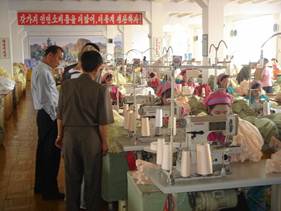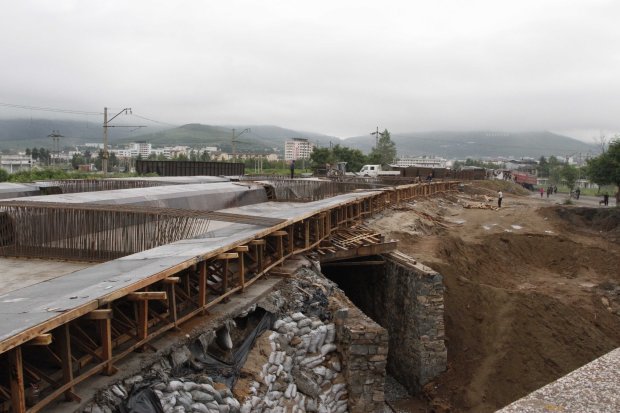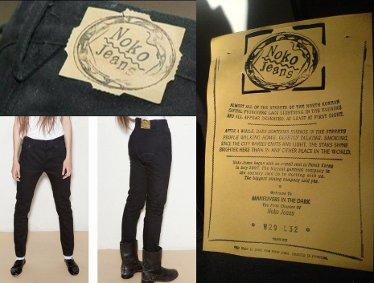 The news is fresh. And it could potentially be some of the most interesting news in the present for cost savvy – and patience as well as unscrupulous investors looking for a somewhat different opportunity: High risk, yes, but potentially with outrageously high returns.
The news is fresh. And it could potentially be some of the most interesting news in the present for cost savvy – and patience as well as unscrupulous investors looking for a somewhat different opportunity: High risk, yes, but potentially with outrageously high returns.
Things in North Korea, secluded for the last 60 years, are undoubtedly changing.
Recent reports from people that have been there on cultural as well as business missions state unanimously that the current state of control they’re subject to is vastly different than it used to be, even as recently as 2 or 3 years ago. The gradual hand over of power from Kim Jong-il to his son Kim Jong-un, and the father’s suddent demise in December 2011 has, so it seems by what the little news that seeps out of the country suggests, opened the doors to new developments:
Alexander Liebreich, chief conductor of the Polish National Radio Symphony Orchestra and principal conductor of the Munich Chamber Orchestra, for BBC: “I had been to North Korea five times but I soon saw that this time everything would be different. Whereas on my previous visits I had been accompanied for much of the time by officials and a translator, now there would be no restrictions on personal communication.
The Pyongyang I discovered was quite different from the city I had last seen in 2006. There were more shops, more people on the streets. Coachloads of Chinese tourists emptied into restaurants and hotel lobbies – our hotel was packed. There was more electricity, a lot of renovation and new architecture. “
This new development had previously already been reported in 2009 in the context of a fashion retail boom happening in Pyongyang, at a time when fashion retail in the West of (claiming to be) on its knees.
The change that has emerged in the course of the past few years, has now ust barely a week ago, been made somewhat more official, in the country’s first New Years address for 19 years – where economic reforms where announced by North Korea’s current leader Kim jong-Un.
And yet, already this seems already old news: The German newspaper ‘Der Spiegel’ reported that the country had hired German experts some time ago, and that by now there already exists a master plan as to how that is supposed to happen.
Foreign Investment and Garment Manufacturing in North Korea – the status quo
We know few accurate facts about the state of the North Korean garment and textile industry. However, we do know that it is one of the highest potential industries for the country. It has historically been one of the most successful export-related activities in the country, and to the day there are companies in the Netherlands, Germany, France, China, and South Korea that are producing various kinds of clothing in North Korea.
While there are very few factories in the country, and all of them suffer from the usual issues of an under-developed country, i.e. power cuts, inadequate and lacking machinery, transport problems, some of the local factories have become relatively large and experienced exporters. It is said that there are about 15 large garment exporting enterprises, each operating several factories spread around the country , and possibly dozens of medium sized companies. In addition, there seem to be some 30 crochet and embroidery exporters. For further details, some – unfortunately – not entirely verifiable producers specifications, this article offers a good and accurate analysis of the current situation.
Looking at the exploratory activities going on both in Europe and in Asia itself – the US still embargoes North Korea, and as such no US company or citizen is allowed to trade with the country – the documented evidence alone makes it clear that attention is slowly shifting from what was impossible up until now in North Korea, to what will become possible in not a too far away future.
For starters, North Korean and China have been – relatively – close over the past few decades. Invariably, and with the rising labour costs in China, Chinese business men are looking across the border and into opportunities to invest into cheaper labour geographies. All backed by the two governments. But even for them it remains a risky business.

By now there exist even dedicated international trade fairs hosted by North Korea, where citizen from across the globe talk shop with local manufacturers and officials while looking for new and ever-cheaper suppliers, investment opportunities, and opportunities to build new businesses. As it happens, the trade fair is held at Rason, a city in the country’s North with an ice-free port and Railway access, close to the Chinese and Russian border, where the country’s old, but currently re-invigorated Special Economic Zone is currently under (re-)construction. An international trade centre is apparently being built on site.
A second one, at Hwangjinping (near Dandongin China), is currently being build entirely from scratch.
North Korea Touristm (KTG) has been organising ‘sign on’ business tours and visits to the Pyongyang Trade Fair since at least 2010. Other than typical trade missions of old times to North Korea, which were on invitation only and heavily government controlled, any one business person can sign on to these for participation.
The Europe-Asia Cooperation Agency (EACA) organized a business mission for European textile and clothing companies in North Korea as early as November 2010. Visits of North Korean garment processing factories was the main focus of the 4 day trip.
Europe remains very active in this area: European specialists are being brieved, and taken on trade missions. Example: The Dutch company MODINT Buying and Production and MODINT Logistics held a sourcing and production seminar specifically for textile and garment production on 19 April 2012 in Zeist, Netherlands. The seminar was given by off-shoring experts in the industry.
Tackle the bull by the horns: Noko Jeans case study as a risk management warning
 The case study of the Swedish Noko Jeans (also on Vimeo, and Wikipedia) shows in full detail the potential of garment production in North Korea – even for a tiny apparel brand – and the political and cultural pitfalls that may bring such a venture to a (temporary) halt. When they received global publicity for their project, and the project was labelled as a ‘political enterprise‘, rather than as a business venture or social enterprise, the whole undertaking came very appruptly and very quickly to a halt. Local retailers pulled out and their painfully constructed relationships with the responsible North Korean authorities disintegrated from a day to the next.
The case study of the Swedish Noko Jeans (also on Vimeo, and Wikipedia) shows in full detail the potential of garment production in North Korea – even for a tiny apparel brand – and the political and cultural pitfalls that may bring such a venture to a (temporary) halt. When they received global publicity for their project, and the project was labelled as a ‘political enterprise‘, rather than as a business venture or social enterprise, the whole undertaking came very appruptly and very quickly to a halt. Local retailers pulled out and their painfully constructed relationships with the responsible North Korean authorities disintegrated from a day to the next.
The primary reason for the Swedish retail to pull the Noko Jeans from their shelves was their suspicion that they had been produced under governmental pressure and in factories with abominal human-rights records.
Their suspicion was, of course, justified. The invariable lack of transparency that results from producing in the current climate – even under somewhat changed conditions – in North Korea, where all production is tightly controlled by the government, poses a severe reputation risk to Western Brands.
To this moment, producing in North Korea means navigating a mine field much more complicated than defined ‘just’ by unforeseeable political manoeuvres. All things North Korea are heavily politicised. Human-right and environmental organisations only wait for an opportunity to extend their reach into the country – with very good reasons for that. And Western governments are equally keen to give the country’s population access to some economic well-being and security, but with an eye on weakening its government (or at least not strengthening it).
And all that while trying to avoide the re-hashing the ‘mistakes’ made in the past with Russia, China and some Latin American countries.
Further Resources:
- North Korea Economy Watch: Clothing Section http://www.nkeconwatch.com/category/clothing/
- CanKor: CanKor is a Canadian interactive resource on North Korea concerned with seeking rational North Korea policy. http://vtncankor.wordpress.com/
- 38 North: website devoted to analysis of North Korea. While it strives to break new ground, the site’s main objective is to bring the best possible analysis to both seasoned North Korea watchers and general audiences alike. http://38north.org/

